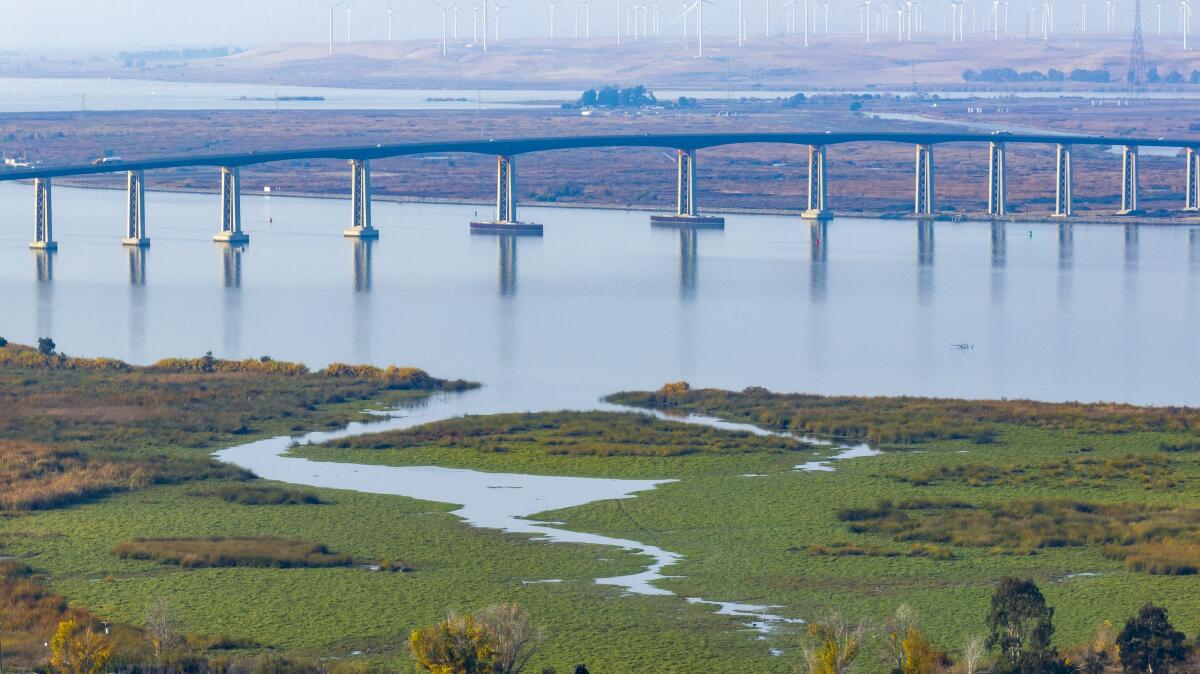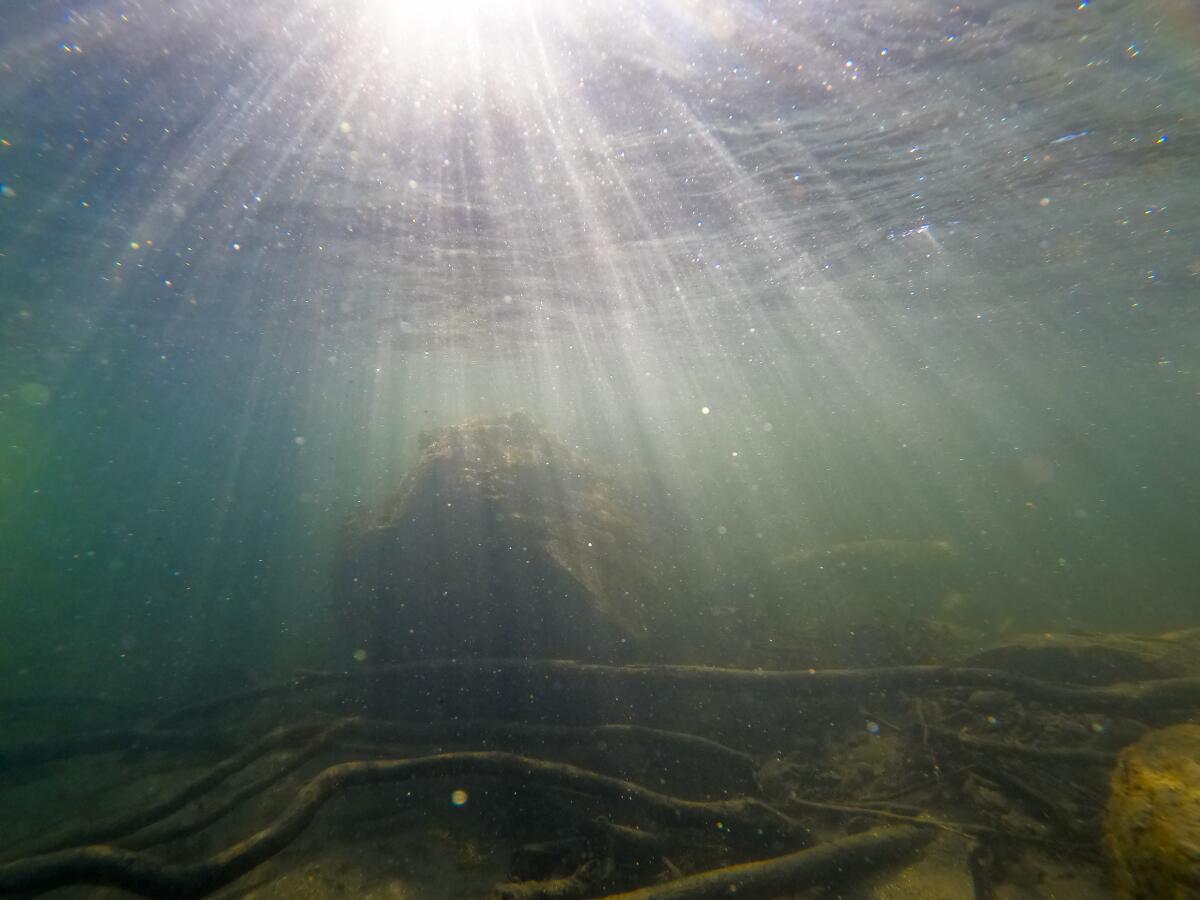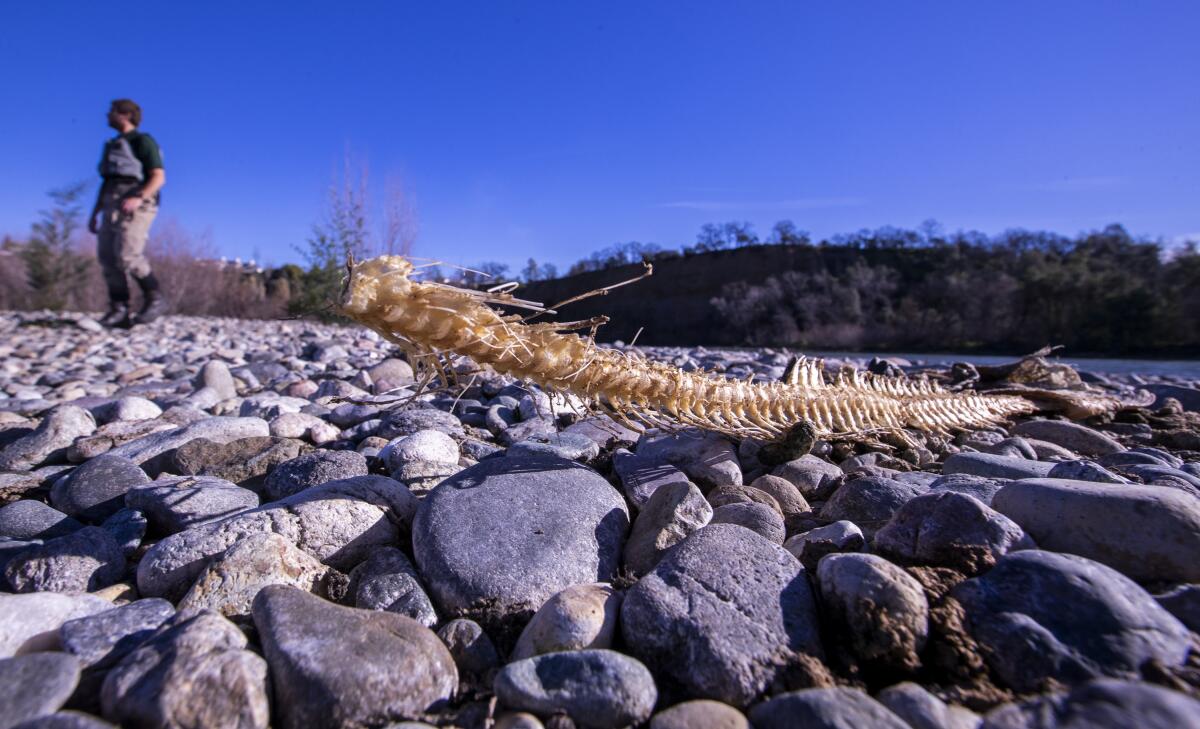Experts urge California to avoid pitfalls in water deals in the delta

- Share via
Welcome to today’s edition of Boiling Point. I’m Ian James, a reporter focusing on water issues for The Times, writing the newsletter this week to fill in for my colleague Sammy Roth.
Some of the thorniest debates over water in California revolve around the Sacramento-San Joaquin River Delta, where pumps send water flowing to farms and cities, and where populations of native fish have been declining.
State water regulators are considering alternatives for new water quality standards that will determine how much water may be taken out, and how much should be allowed to flow through the delta. And one alternative has been especially controversial: a proposal to rely on negotiated “voluntary agreements” in which water agencies pledge to forgo certain amounts of water while also funding projects to improve wetland habitats.
Gov. Gavin Newsom and his administration have touted this voluntary path as a solution to break away from the traditional conflict-ridden regulatory approach, but some leading water experts have raised a number of concerns. They say that to be effective and improve the delta’s deteriorating ecological health, the proposed agreements need to come with a list of ingredients.
And they warn that without the right measures in place, California faces serious pitfalls, including risks that the delta’s fish populations and ecosystem could continue to decline.

To learn more about these issues, I spoke with Felicia Marcus and Michael Kiparsky, two experts who wrote a report outlining what they say should be “guiding principles for effective voluntary agreements.” The report was released last month by the UC Berkeley School of Law’s Center for Law, Energy & the Environment.
Summarizing their conclusions, Marcus, Kiparsky and their colleagues wrote that leading with voluntary agreements “as a solution for balancing human and environmental needs for water — rather than first, or simultaneously, pursuing a regulatory pathway to achieve key biological goals — is a perilous strategy that risks continued environmental degradation.”
Although voluntary agreements can be beneficial, the researchers said, “they cannot fully substitute for regulatory requirements” that ensure sufficient water for the environment.
The California State Water Resources Control Board is in charge of setting water quality standards and flow requirements for the delta and San Francisco Bay.
Marcus, a former chair of the board who is now a visiting fellow at Stanford University, said managing water in the delta “requires a complex balancing act” of agricultural and urban uses, fisheries and ecosystems.
“It means making some hard calls that make people unhappy and have an impact on historic human uses,” Marcus said. “We traditionally have shortchanged the fish and wildlife flows needed to sustain the ecosystem. We have cut it too close and taken more water out of the system that any ecosystem can bear.”

Populations of salmon, delta smelt and other species have been declining in recent years.
Last year, populations of fall-run Chinook salmon were so low that regulators shut down the fishing season along the coast. Environmental advocates have called for more stringent flow requirements to help struggling fish populations recover.
The update of the Bay-Delta Water Quality Control Plan has been years in the making. The last substantial changes in water quality and flow requirements were adopted in 1995 for much of the watershed.
“The only way to make progress is to make regulatory calls based on the science that add water back in a way that mimics nature, while leaving open the door for creative ways to implement habitat projects on the ground that can help fish faster than flow alone,” Marcus said.
Marcus was the state water board’s chair until 2019, when Newsom declined to reappoint her after a controversial board decision to increase flow requirements in part of the delta, and instead appointed E. Joaquin Esquivel as chair.
Marcus said if voluntary agreements go forward without adequate standards in place, “the ecosystem will continue to collapse and more species will go extinct.” She said it would also open up the potential for litigation or intervention by the federal Environmental Protection Agency “because of how long it is taking the state to update its now obviously inadequate water quality control plan.”
During her time on the board, Marcus said the agency’s staff also invited irrigation districts and water agencies to discuss potential agreements, but the goal was always to combine such deals with regulations setting flows, thereby also giving the parties incentives to negotiate and reach deals that would work.
“We put out a framework to signal where we were going, and the plan was to do it in 2019. But it was instead put on hold as these voluntary agreement discussions were taking place,” Marcus said.
And the last five years of delays, Marcus said, have translated into allowing lower flows in the delta than the science indicates are necessary for ecological health. She called it a “heartbreaking delay that the fish really can’t afford.”
Marcus said it’s good the state water board is now moving ahead with the process of updating the water regulations.
“Our message is, keep moving. Don’t stop again,” Marcus said.
“Update the regulations with enough water … while keeping an open eye towards how to implement it in a creative way,” Marcus said. “There is a path here. But right now the delay is just deadly to the ecosystem, and we’re going to end up losing it, which is bad for everybody.”
Kiparsky, who leads the Wheeler Water Institute at the UC Berkeley School of Law, said a serious risk if the status quo continues is that the ecosystem probably will keep suffering devastating blows.
“The status quo means dead fish,” Kiparsky said. “The protections are inadequate now.”
He said state officials urgently should pursue “both the creative solution but also the regulatory foundation.” That foundation, he said, lies in updating the regulations in a way that sets clear flow rules based on the latest science.
“What’s at stake in the delta is how our society decides to balance life for the ecosystem, livelihood for farmers, and water supply for cities. The most important thing is that the state not abdicate its responsibility by substituting hope for clarity,” Kiparsky said.
“This administration must act on its regulatory authority, while also exploring alternative solutions,” he said. “Relying entirely on the latter will likely lead to collapse.”
In other words, he said, not updating the regulations would in effect be “hanging the ecosystem out to dry by creating an incentive for delay and weak alternative proposals.”
Kiparsky said he and his colleagues think there is no problem with the approach of voluntary agreements “as long as the regulations are updated.”
If negotiated agreements “can provide more effective ecological outcomes with less water, that would be a great thing,” Kiparsky said. “But it won’t happen without an updated regulatory baseline.”
In recent years, Kiparsky said, the state’s approach “has put all of its eggs, it seems, in the basket of negotiating a voluntary agreement with water users.” And the memorandum of understanding that came out of those negotiations, he said, leaves many important details to be fleshed out.
In their policy paper, Kiparsky, Marcus and their colleagues recommended five principles to “guide the appropriate use” of voluntary agreements.
They said the state should “establish a strong regulatory foundation” for voluntary agreements, which cannot replace regulatory standards. They said such agreements “must achieve comparable environmental outcomes” to what would be expected under regulatory requirements.
They also said such agreements need to “articulate clear, specific biological goals and measures of success,” that actions taken under them must be supported by the latest science, and that the agreements “must include robust and transparent accountability mechanisms.”
The state water board said in an email that the agency’s staff has not yet prepared a response to the recommendations, and that it will release responses to these and other public comments on its draft report.
The board said the next major step in the process of considering updates to the bay-delta plan “will be the public release of draft possible changes.” The draft amendments, the agency said, will be “part of a full public process, which will include an opportunity for written comments and a public workshop,” and then final proposed amendments will go before the board for a decision.
Environmental groups have said they welcome the state’s analysis after years of delays, but they have argued that the voluntary measures would be disastrous for fish populations. They’ve said they want to see the board set flow requirements that would ensure sufficient amounts of water pass through the delta and into San Francisco Bay, and also take other measures to protect the deteriorating aquatic ecosystem.
Marcus said she believes it’s entirely possible to craft a successful approach with voluntary agreements, as long as they’re not used as a substitute for the regulations.
“There is definitely an urgent need for action,” she said, and the effects of climate change are adding to the urgency.
“I think climate change just makes it all harder because we expect to have more frequent and drier dry periods,” Marcus said. “It means that we need to wake up, and become more efficient all of the time, including normal times, to preserve water in storage to get all through the dry times.”
Facing the need to be “far more precise with how we use water,” she said, an option of reaching agreements to help with water management, is appealing.
“But you have to have clear rules, and an underlying foundation of enough water, to make it work,” Marcus said.
ONE MORE THING
In these and other water management decisions, the stakes are extremely high for California’s salmon populations, which have suffered accelerating declines in recent years. Newsom in January announced a strategy for protecting and rebuilding salmon populations, outlining priorities including removing barriers that block salmon migration, restoring habitat and “protecting water flows in key rivers at the right times.”
Meanwhile, the latest available data show a sharp drop in the numbers of Chinook salmon returning to the Sacramento River to spawn. According to a report this week from the Pacific Fishery Management Council, the population of returning fall-run Chinook that naturally spawned in 2023 in the upper Sacramento River was estimated at 6,160 fish.
Fishing advocates said that represents a 96% drop from the average numbers from 1995 to 2005, a major blow for the population that traditionally has supported commercial and recreational fisheries.
Populations of endangered winter-run Chinook also have been declining. And last year, state and federal biologists began capturing juvenile spring-run salmon to breed them in captivity in an attempt to prevent extinction.
Scott Artis, executive director of the Golden State Salmon Assn., blamed Newsom and his administration for “disastrous state water management decisions that dramatically increased the impact of the drought” from 2000 to 2022. He said those decisions have meant inadequate flows and high water temperatures, and he called on Newsom to “guarantee adequate cold flows in our rivers.”
This column is the latest edition of Boiling Point, an email newsletter about climate change and the environment in California and the American West. You can sign up for Boiling Point here. And for more climate and environment news, follow @ByIanJames and @Sammy_Roth on X.
Toward a more sustainable California
Get Boiling Point, our newsletter exploring climate change, energy and the environment, and become part of the conversation — and the solution.
You may occasionally receive promotional content from the Los Angeles Times.




